The Big Read: Top to bottom, Coyotes may boast NHL's most complete goaltending department
Director, coaches, scouts help Arizona touch every base to develop critical position
Welcome to the AZ Coyotes Insider newsletter. I generally publish stories four to six times per week (some of them free). By subscribing, you’ll be supporting independent, accountable journalism. Subscribe now so you won’t miss a story.
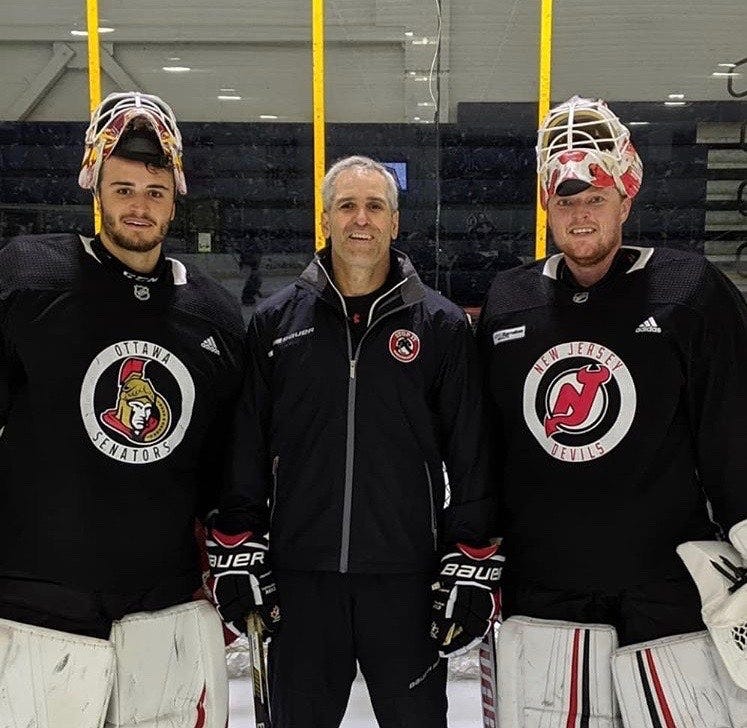
When Bill Armstrong interviewed for the vacant Florida Panthers GM spot this offseason, one of his recommendations was to create a revamped and more comprehensive goaltending department that covered all of the bases. While the Panthers made national headlines in December for their new approach to that critical position, those who closely follow goaltending astutely pointed out that the recently hired Coyotes GM had beaten them to the punch.


When Armstrong named Brian Daccord the Coyotes director of goaltending operations and special assistant to the GM four months ago, Daccord wasn't the first of his kind. A handful of other teams such as Detroit (Phil Osaer), Montreal (Vincent Riendeau) and the New York Islanders (Mitch Korn) had men in similar roles, and Calgary promoted Jordan Sigalet to that role in December. What may make the Coyotes unique in the NHL is their top-to-bottom approach.
The Coyotes are one of a small group of teams that has employed a scout devoted solely to goaltending. Clay Adams has been with the team for the past two seasons, but on Nov. 1, Arizona also hired Magnus Olsson to serve as its European goaltending scout. Olsson, who is based in Gothenburg, Sweden, runs Blue Crease Goaltending, a company similar in scope to Daccord’s Stop It Goaltending, if on a smaller scale. Olsson has worked with goalies at every level from youth to the NHL, the Allsvenskan (Sweden) and the DEL (Deutsche Eishockey Liga).
He has also worked with Daccord at camps in North America and Europe, so when Armstrong green-lighted the idea of a European goalie scout, Daccord jumped at the chance to bring Olsson aboard.
“This is Army’s (Armstrong) vision so it wouldn’t be possible if we didn’t have a GM and ownership that are willing to commit the resources,” Daccord said.
The benefit of Olsson’s hiring is easy to see.
“My job will be to keep track of the European guys but also to bounce ideas about the other guys off of Clay and the others in the department,” said Olsson, who played the position, including a junior stint with the Truro Bearcats (Nova Scotia) of the MJAHL. “Clay Adams is responsible for the goalie draft, him and Brian, but I am his extended arm, so to speak.
“Rather than Clay traveling all the way over here and spending all of that money on a guy we’re not sure about yet, the guy he’s interested in might be in my backyard in Sweden, or maybe in Finland or the Czech Republic or Russia. I speak Swedish, English, Norwegian, a little bit of German and Danish, not fluently but I get around.”
It’s not just Olsson’s multi-lingual skills that have Daccord excited.
“To me, he was a huge hire,” said Daccord, who served as goalie scout for Toronto under Lou Lamoriello. “Magnus can talk their language and not just because he is Swedish. He understands how they operate over there and in interviews he can have a better feel for their culture than we might. I think he will be invaluable from that standpoint, plus he’ll make us so much more efficient by weeding out who Clay should get overseas to see or not.
“Most people think scouting is about finding players, but most of the time, scouting is about eliminating players. You have a finite amount of time and resources to see goalies and scout. If you’re spending a lot of that time on goalies that aren't going to be picked, that takes time away from evaluating the ones who will be picked.”
Daccord said the Coyotes already have grades on 261 goalies worldwide, and Adams said that he tracks about 250 goalies on an annual basis, before whittling the list.
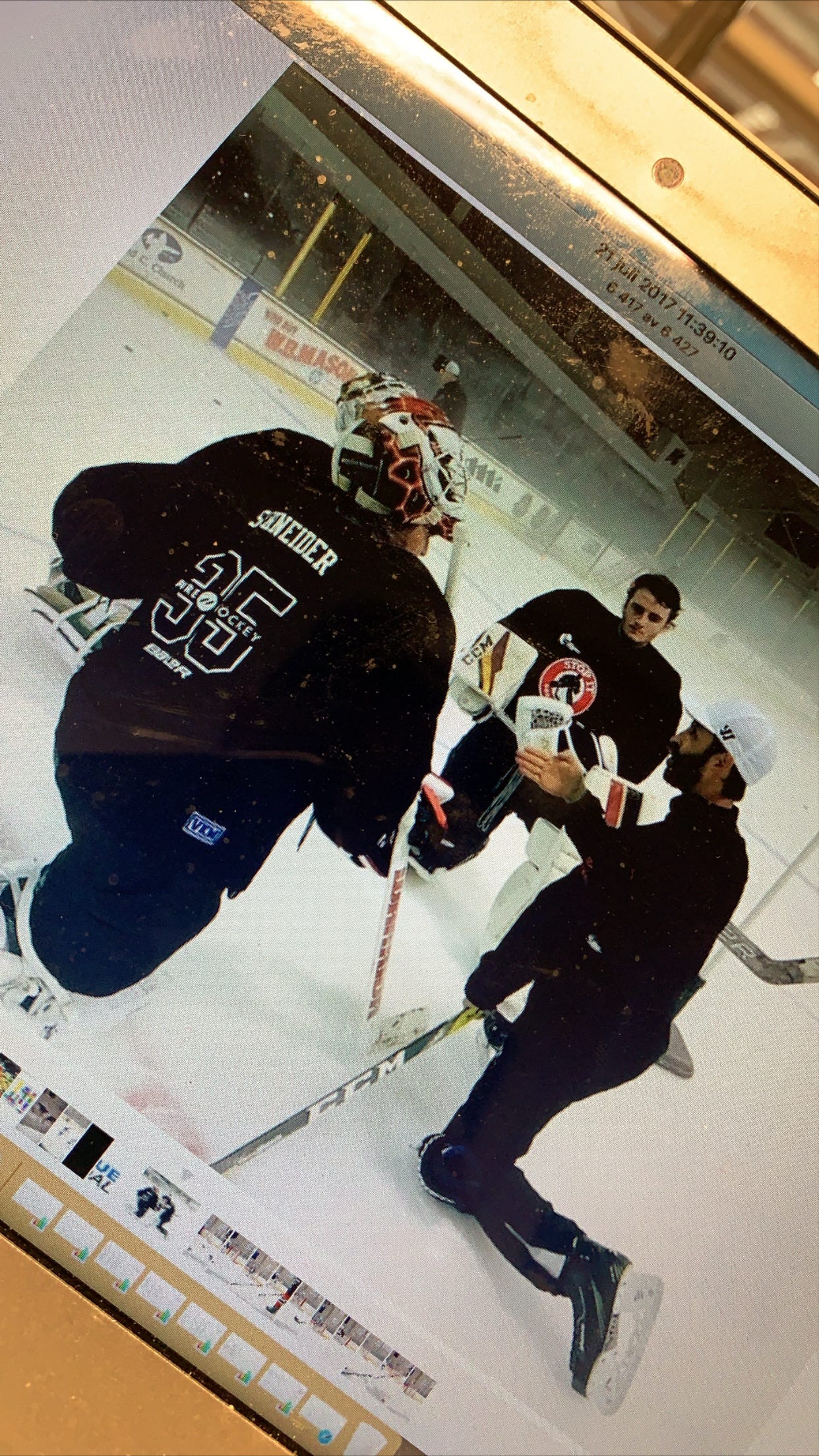
There are several teams with former goalies in their hockey operations departments who scout, but most of them wear other hats and perform additional duties. With the exception of the Colorado Avalanche, I could not find another team that employs more than one scout devoted solely to goaltending. It’s a telling glimpse into the league’s historic neglect of the position.
“If you look at most NHL teams, they were lucky to have more than one goalie guy in any role 10 years ago,” said Adams, who also works with Daccord at Stop It Goaltending. “The head goalie coach was probably responsible for scouting, development and pretty much everything else. Over the past few years, teams are realizing how important it is to make sure that goalies have the same developmental opportunities as skaters do. Everyone says goaltending wins championships, but when you're not putting the time and effort into scouting and development, there’s a disconnect.”
A collaborative but specialized approach
With the addition of Olsson, Arizona’s goaltending department now features five men, plus an additional affiliated ECHL coach who is not employed by the Coyotes.
Brian Daccord: Director of goaltending operations
Corey Schwab: Goaltending coach, responsible for NHL goalies
Zac Bierk: Goaltending development coach, responsible for AHL goalies and other prospects
Clay Adams: Goaltending scout
Magnus Olsson: European goaltending scout
Danny Battochio: Rapid City Rush (ECHL) goaltending consultant (currently working with prospect David Tendeck)
The additions of Daccord and Olsson not only make life easier on Adams, they also allow Schwab and Bierk to zero in on their main duties, rather than getting pulled in multiple directions.
“In the past, I tried to help out as much as I could, so a couple times a year I’d work with Clay in evaluating goalies for the draft, and Zac would be included in that,” Schwab said. “But you get busy during the season so with these additions, we can build on the foundation we have created here and take it to the next level, and with Brian here, now I can focus on our NHL guys and provide them everything they need.
“We’re still all going to collaborate on a lot of things, but now you have another voice in Brian who has been a coach, been a scout and been a development guy so he understands all those perspectives and he understands the position from all the work he has done and all of the innovative things he has done with it.”
The addition of goalie scouts also means that the goalie coaches will have better details on the prospects coming to them than they have in the past.
“My favorite line from scouts in the past was: “‘I don’t know the first thing about goaltending, but …,’” Bierk said, laughing. “For years these have been the guys that were building the foundation of the position within an organization, but working with Clay, I see how deep he goes into the nuances of a goaltender’s game and how much work he puts into assessing character.
“Part of Brian’s process that I am learning more about and really interested in is his combining of analytics with feel. One does not replace the other. Both are congruent when assessing a prospect or a goalie’s performance, but we even get into dissecting the structure of the defense that he is playing behind, or the types of shots he is facing or trends within the season. It’s so layered and complex when you really dive in and it’s awesome to have the right people working together to get the most out of this data while not disregarding the feel aspect of it.”

Daccord has incorporated his own analytics into the evaluation of goaltenders. The Coyotes will use those same metrics at every level of the organization, from scouting and evaluating prospects, to evaluating the performance of their ECHL, AHL and NHL goalies.
“Everybody looks primarily at goals against and save percentage, which are indications of performance, but there are too many variables in those like when you put a goalie on a weaker team. The best way to judge how a goalie is performing is goal expectancy and how he does vs. what he is seeing in a game from a probability standpoint. That way, it’s not, ‘This guy has great numbers because he is on the best team in the league and he only sees five high-percentage shots a game.’ It’s a matter of being able to evaluate the game.
“We have our own metrics on goal expectancy and every game that Zac watches in the AHL, or Corey in the NHL, or Clay or myself, we’re all doing the same thing. We have our own way to chart rebounds. A green, red or black rebound judges the quality of the rebound and our definition of what a controlled rebound is. There are pressured puck touches which measures when the goalie is handling the puck when someone is on him from the circle on down. There are grades on playing the puck and grades on the glove. We’re all looking at the same things and we’re watching hundreds and hundreds of games so what I developed was a numeric value based on probability and the type of shot. It’s not just shot location. Was it a good shot? Was there a deflection, a screen, contact? We look at all of that and we look at each shot individually to get a better sense.”
The scouting process
Like other teams, the Coyotes must still rely on their area scouts to find goalies worth watching. Daccord, Adams and Olsson have countless contacts around the globe so they may have already heard of a prospect before an area scout alerts them. They may even have watched video of him because it is so much easier to acquire video from most leagues than it was in the past. But with only one goalie scout on each continent, it is impossible for Adams and Olsson to lay the first set of eyes on each prospect in live viewings (and for the next few months, COVID will limit live viewings for everyone, dramatically).
To better prepare the Coyotes’ area scouts, Daccord and Armstrong are arming them with more evaluation tools than they have had in the past through meetings and video sessions.
“There are so many games in the world going on that you still need your regular scout to identify those goalies and then point your goaltending scout in the right direction, so your scouts still have to be educated on the position,” said Armstrong, who was a scout with the St. Louis Blues for six seasons before being named the organization’s director of amateur scouting in 2010.
“I used to go to goaltender camps in the summer and study it. That started when I was a coach and it really helped me when I was involved with the drafting of guys like Ben Bishop, Jake Allen, Ville Husso, Jordan Binnington and Joel Hofer.”
It also helped Armstrong gain the confidence to draft goalies consistently. While the Coyotes have only selected four goalies in the past 10 drafts, the Blues have selected eight.
“Joel Hofer was in Swift Current (WHL) but he never played and the team he was on was so bad that when he did play he got crushed,” Armstrong said. “But in our case, the area scout had a relationship with the coach who said, ‘Listen, I know he’s getting crushed out there, but he’s good.’”
Despite the first-round selections of Spencer Knight (Panthers) and Iaroslav (his preferred spelling, per the NHL) Askarov the past two seasons, teams are reluctant to select goaltenders high in the draft because they take a long time to develop so their ceiling is more uncertain than skaters. But to those who understand the position, there is another problem inherent in teams’ approach.
“If teams are averse to taking goalies in the first two rounds, that might be an indication that you need goalie experts to evaluate them so you don’t miss on those picks,” Adams said. “To me, you need someone to say, ‘This guy is not going to turn into a bust.’”
Some area scouts are more adept than others at scouting goalies, but they often have to pay attention to multiple players in a game, making the evaluation of an unfamiliar position all the more challenging. Besides, why not have a specialist conduct the evaluation?
“I wouldn’t want to be responsible for scouting defensemen, so I hope they are happy to have us look at the small details that we want in a goalie,” Olsson said. “We’re also looking at the big picture obviously, to sign somebody to an AHL or NHL team. They can’t have too many flaws and they have to be elite at most things, so we’re looking at things that maybe they don’t have but we can teach them. You don’t have to be a superstar. If you’re missing the right pieces, you're still interesting.”
Schwab has seen the evolution of the goaltending department from its genesis to its present form. He is beyond thrilled to see more resources being devoted to the position.
“It’s long overdue,” he said. “When I started 16 years ago with the Tampa Bay Lightning, I was one of the first goalie development coaches and it was a situation with the minor league guys where the NHL (coach) might only get to you a couple days out of the month because he’s busy with the NHL team. Now we have video and better technology to break down games. As far as player development, there were none 10 years ago and now everybody has development coaches.
“A lot of people will think, ‘Why do you need so many guys when you have only two goalies on each team and so many players?’ Well, the goalie is so much more involved in the game than a player so you can work on so much more. I think it's great that Bill Armstrong was willing to commit to this and build on the foundation that we had already. The hope is that we find a way to develop some top-end NHL goalies. It’s hard to predict which guys will turn out to be that guy, but hopefully we all can help these guys as they are going through their ups and downs and provide them with a clear and consistent message.”
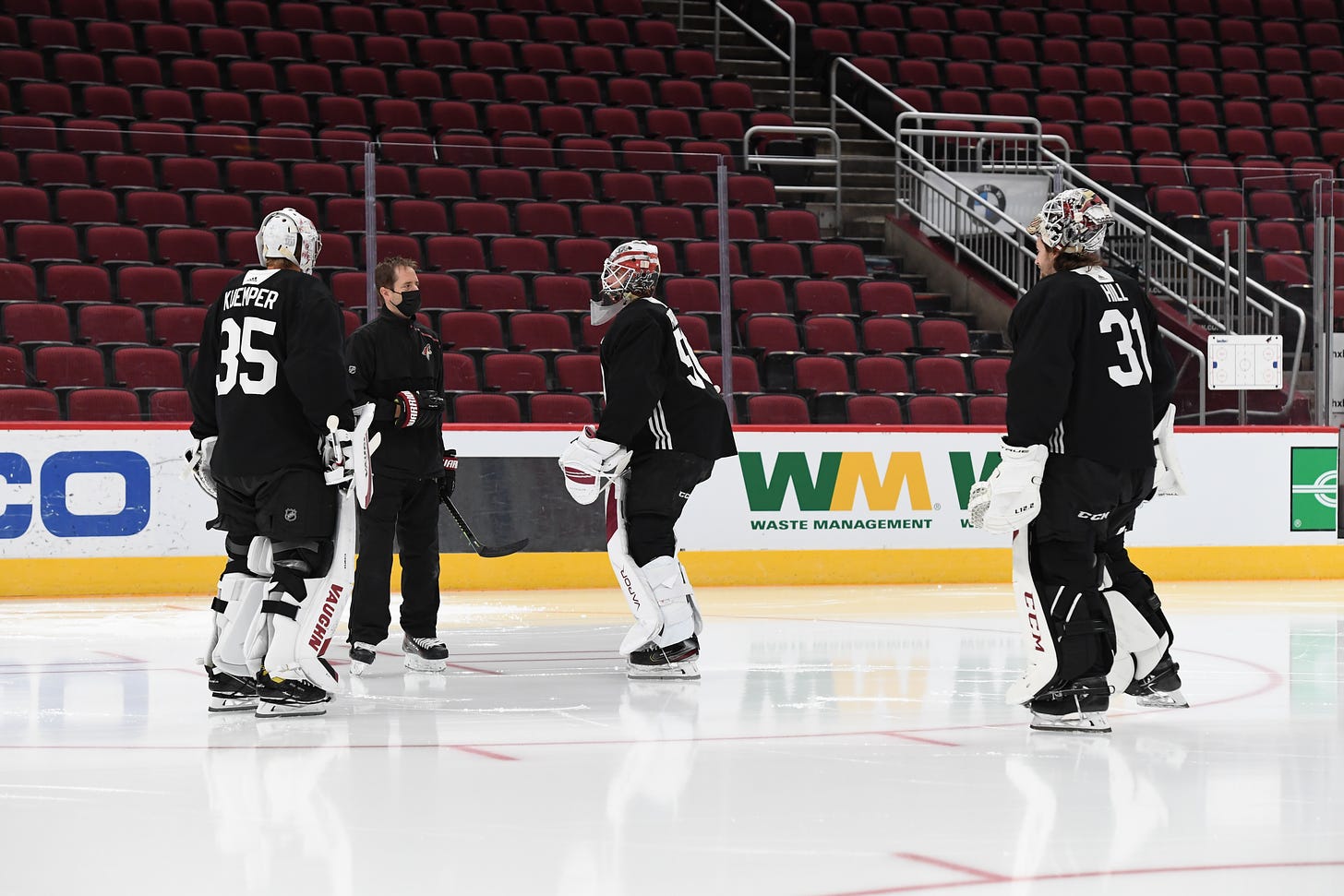
Daccord smiles when he thinks about the meetings that his staff has already conducted, or as he calls them, “five goalie guys talking shop.” Beyond the valuable exchange of ideas and opinions, he believes the Coyotes have created a structure that best positions them for success in evaluating, developing and improving goaltenders.
“One of the biggest things is to have consistency with the goalies you want to draft, what attributes you are looking for, and then having everybody on the same page which is about making sure that from the time we draft a goaltender through the development process until he plays in the AHL or NHL, everybody is communicating,” Daccord said.
“Having so many knowledgeable goalie people on staff has allowed us to have so many amazing meetings and it’s really exciting to watch the collaboration between guys who see things from different altitudes with different perspectives. We have as complete a staff as I think you are going to find in the NHL.”
Follow Craig Morgan on Twitter: @CraigSMorgan



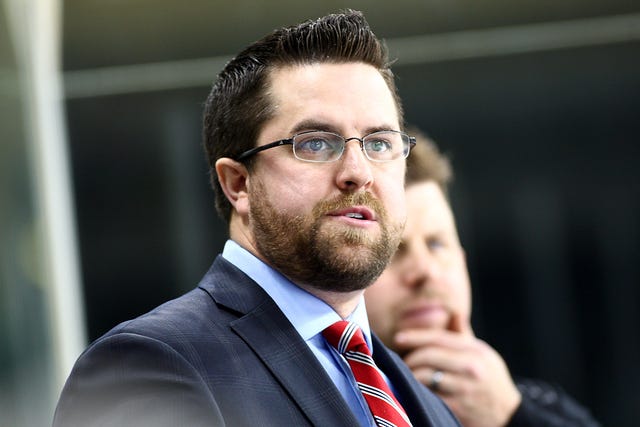
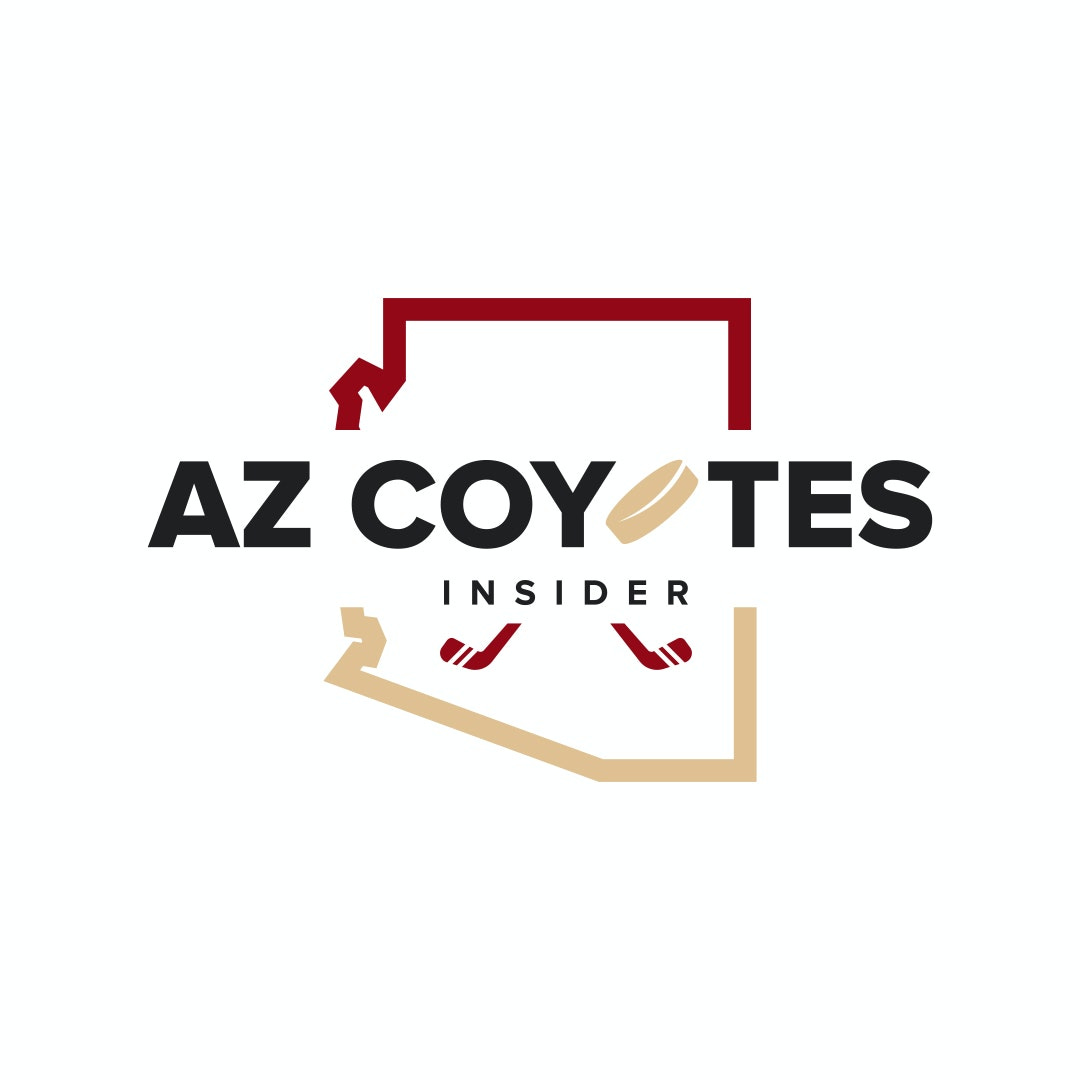
Really like these kind of articles that show how the team operates, particularly when it's something they are good at it. I would not be opposed to the team snatching up more goalie scouts if only to further he gap between them and the rest of the league who are surely to start emulating the Coyotes soon.
Great read! Thanks, Craig.